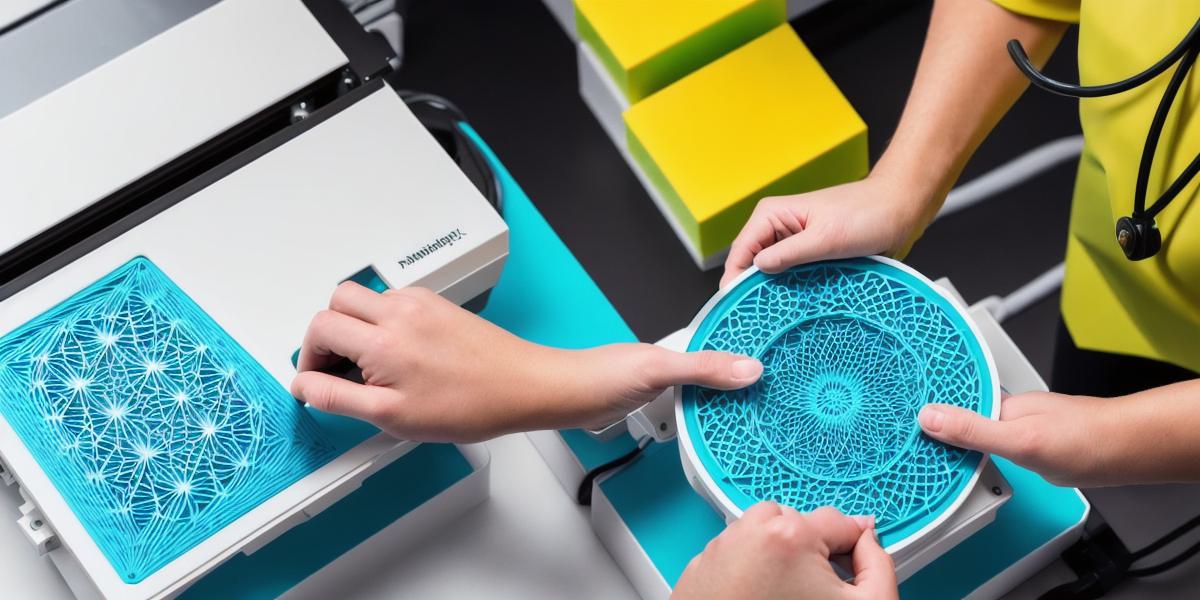Introduction:
As the world becomes increasingly concerned about environmental issues, it’s no surprise that many people are looking for innovative solutions to help reduce waste. One such solution is zero-waste manufacturing, which involves creating products using minimal resources and eliminating as much waste as possible. In this article, we’ll explore how 3D printing can be used to unlock the potential of zero-waste manufacturing.
Heading: What is Zero Waste Manufacturing?
Zero waste manufacturing is an approach to production that aims to eliminate all forms of waste. This includes not only physical waste but also energy waste, water waste, and even social waste (such as waste in terms of labor and resources). The goal of zero-waste manufacturing is to create products using minimal resources and minimize the environmental impact of production.
Heading: How 3D Printing Can Help with Zero Waste Manufacturing
3D printing is an ideal technology for zero waste manufacturing because it allows for the creation of custom parts on demand, eliminating the need for traditional inventory systems. This means that only the exact number of parts needed are produced, reducing waste and conserving resources. Additionally, 3D printing can be used to create objects from a wide range of materials, including recycled plastics and even biodegradable materials.
Heading: Case Studies in Zero Waste Manufacturing with 3D Printing
One example of zero waste manufacturing using 3D printing is the company EOS, which has developed a system for producing parts on demand using 3D printing. This system allows customers to order custom parts directly from EOS and have them delivered within a few days, eliminating the need for inventory systems. Another example is the company Shift Systems, which uses 3D printing to create medical devices on demand. This reduces waste by only producing the exact number of devices needed, rather than producing a large quantity that may not be used.
Heading: The Benefits of Zero Waste Manufacturing with 3D Printing
The benefits of zero waste manufacturing with 3D printing are numerous. First and foremost, it reduces waste and conserves resources. Additionally, it can help to reduce costs for companies because they only need to produce the exact number of parts needed, rather than maintaining inventory systems. It also allows for faster production times, as custom parts can be produced on demand rather than waiting for a shipment from a supplier.
Heading: Expert Opinions on Zero Waste Manufacturing with 3D Printing
Dr. Richard Wagner, Director of EOS North America, believes that 3D printing is "the next step in the evolution of manufacturing." He explains that "with 3D printing, we can produce custom parts on demand, reducing waste and conserving resources. It’s a win-win for both the environment and businesses." Similarly, Dr. Scott Dehnert, CEO of Shift Systems, believes that "zero waste manufacturing with 3D printing is the future of medical device production. It allows us to produce custom devices on demand, reducing costs and waste."
Heading: Real-Life Examples of Zero Waste Manufacturing with 3D Printing
One real-life example of zero waste manufacturing with 3D printing is the company Local Motors, which uses 3D printing to create custom cars. The company produces parts on demand, reducing waste and conserving resources. Another example is the company Nike, which has partnered with HP to develop a system for producing custom shoe soles using 3D printing. This allows customers to order soles in their exact size and shape, eliminating waste and conserving resources.
Heading: The Future of Zero Waste Manufacturing with 3D Printing
The future of zero waste manufacturing with 3D printing is bright. As more companies adopt this approach, we can expect to see a significant reduction in waste and the conservation of resources. Additionally, we can expect to see faster production times and cost savings for businesses. With continued innovation and development in 3D printing technology, the possibilities for zero waste manufacturing are virtually limitless.
Summary:
In conclusion, 3D printing is an ideal technology for zero waste manufacturing. By allowing for the creation of custom parts on demand and eliminating inventory systems, we can reduce waste and conserve resources. With continued innovation in 3D printing technology, we can expect to see a significant reduction in waste and the conservation of resources in the future.
